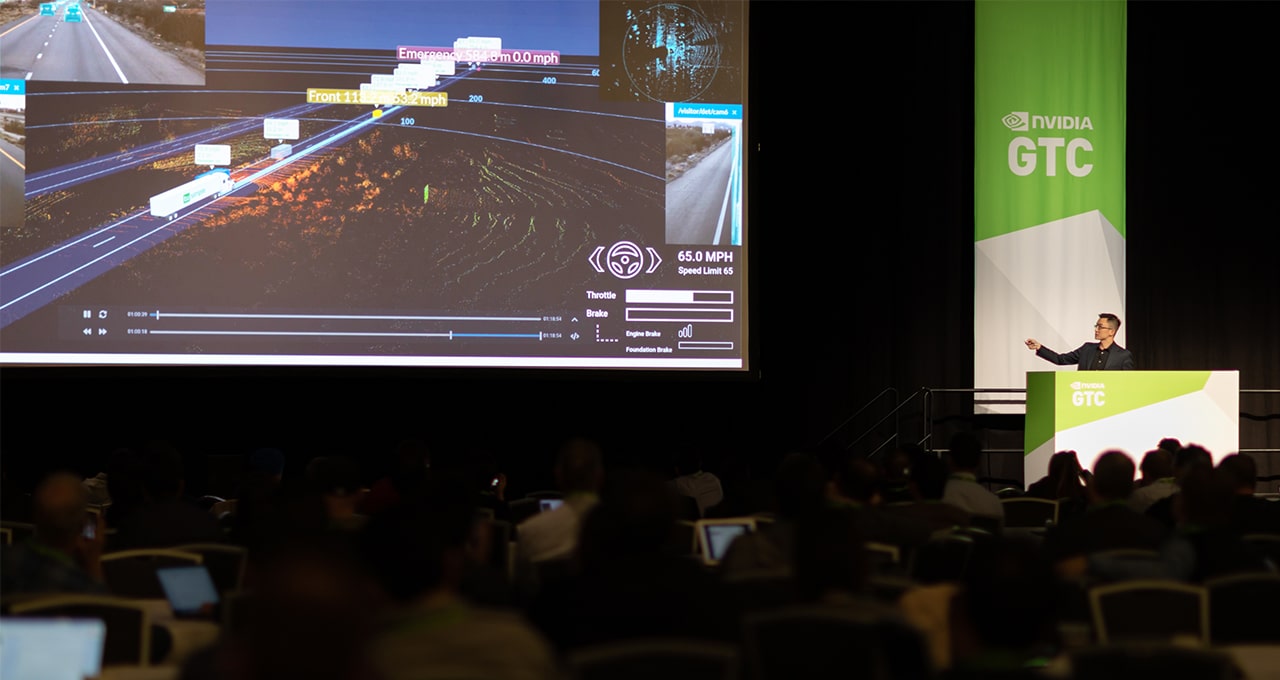Autonomous shuttles easing the hassle of first- and last-mile transit. Level 2+ and higher automated vehicles relieving the stress of highway traffic jams. Robotaxis providing inexpensive, round-the-clock urban transportation.
As we enter the next decade, autonomous driving and AI-powered vehicles will revolutionize the way we move. That’s why transportation has become an integral part of the conversation at the GPU Technology Conference, the world’s premier AI event.
There isn’t just one person or company driving this transition. It’s the combined effort of automakers, suppliers, startups, researchers and regulators. They’ll all be gathering at GTC, running March 22-26, 2020, in San Jose, to discuss the latest advances and the roadmap for what’s ahead.
And we want to hear from you. Submissions for GTC 2020 sessions and posters are now open. Send us your idea and join the ranks of experts and researchers who make GTC the place to be to understand how the benefits of AI, and the GPU technology that powers it, are on the road to being realized.
Where the Rubber Meets the Road
Speakers at GTC earlier this year dove into the reality of the complex process of autonomous vehicle development.
In a talk titled “Autonomous Driving: The Good, The Bad, and The Ugly,” TuSimple CTO Xiaodi Hou detailed the triumphs and tribulations of bringing autonomous trucks to market. The startup has achieved remarkable progress, self-driving in inclement weather and completing autonomous delivery routes for the U.S. Postal Service.
With the help of the high-performance compute of NVIDIA DRIVE, Hou said TuSimple can perform object detection at highway speeds in real time as well as fuse data from a variety of sensors to advance their autonomous trucks on the road safely and efficiently.
Zeroing in on a specific use case, Volvo Cars held a session on their autonomous parking capability. By combining technologies in development for fully autonomous vehicles, Volvo’s platform, and others like it, demonstrate how smaller transportation problems like finding parking can be solved in the short term before self-driving cars arrive.
Groundbreaking Research
In addition to technology geared toward production, GTC speakers highlighted research underway for longer term development.
Lex Fridman, a research scientist at the Massachusetts Institute of Technology, described the challenges of designing autonomous systems for humans and how researchers are approaching these issues.
These tests include driver monitoring, voice controls and observing massive amounts of human driving data. According to Fridman, these trials have demonstrated a variety of obstacles to deploying autonomous vehicles, as well as opportunities to implement safety features for human drivers.
Toyota Research Institute, the R&D arm of the global automaker, held a session diving into the development work for completely unsupervised autonomous machines and robots. Beginning with training and moving to testing and development, the researchers outlined the roadmap from supervised neural network learning to a completely autonomous future.
In 2020, GTC will continue the conversation of AI in transportation, and go even further into the benefits and challenges to moving autonomously. If you’re working on these technologies, submit your idea for a talk or poster here, and we’ll see you in San Jose.
